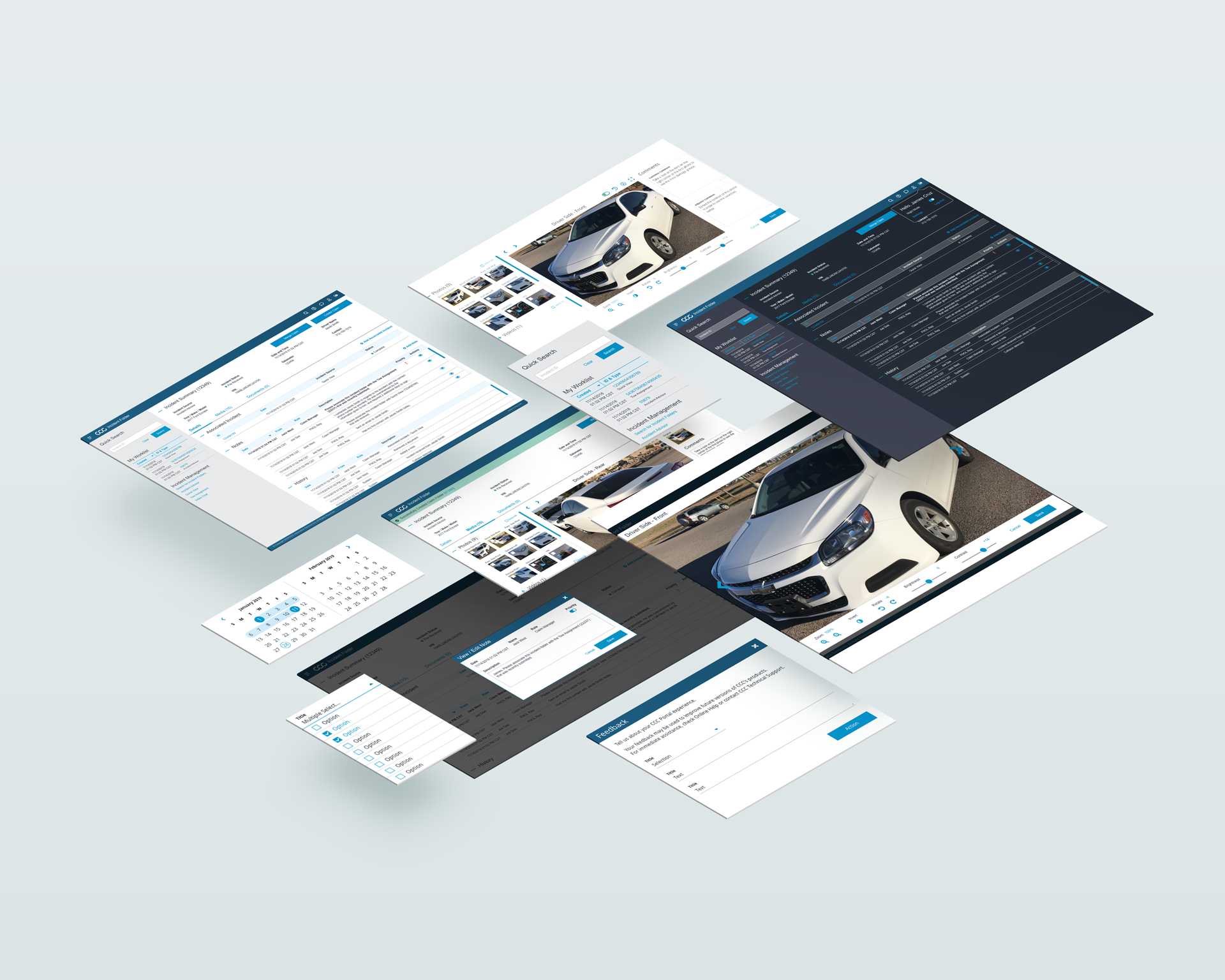
03. Incident Folder
The Portal was developed by CCC Intelligent Solutions - the market leader Enterprise SaaS for Insurance, Repair Facilities, Auto Manufacturers and Parts Suppliers. It contains dozens of tools for employees to use on a daily basis to create and manage 16 million claims every year.
While my team and I worked on many applications within the Portal suite, I want to focus on one in particular. Incident Folder is a B2B desktop application allowing appraisers to easily review damaged vehicle photos and video taken by Quick Estimate (a B2C self-service mobile application). These appraisers then utilize built in advanced prediction models and photo analytics to create repair estimates or determine total loss, then relay next steps to customers for end-to-end accident resolution.
Role
On this project I led a team of two UX Designers, two UI Designers and one Front-End Developer. I facilitated design workshops and we collaborated with a Product Manager, numerous Software Engineers and Business Systems Analysts. I helped bring this product from concept to production environment.

Problem
When an automotive claim comes into the system, a claim folder is created. This digital folder houses dozens of files related to the accident from police report to repair estimate. When CCC began rapid expansion into the self-service mobile app market we saw a massive increase in media files associated to every claim folder. The outdated claim folder was not built to handle heavy image and video content and the process for appraisers to review this media was slow and cumbersome. It became apparent we needed to design a new system to organize, monitor status, and manage claims while also making it easier for users to review damaged vehicles to determine repair estimates.
Discovery
We began the project with a week-long design sprint and asked several subject matter experts to join our cross-functional team. Several discoveries were made such as learning users bounced back and forth between several different applications to utilize features that could be easily incorporated into one UI. We used these findings to push for a better user experience. By the end of the sprint we had a promising high fidelity interactive prototype that was tested for improved usability along with positive feedback from stakeholders. This laid the groundwork for continued iterations and eventually the final product.




Solution
The solution resulted from an iterative design and testing approach. At the top of screen we placed summary information that could be collapsed to give more space for photos. For quick scanning of multiple photos we utilized tabs and a thumbnail gallery on a left hand side column. Selected media takes the main stage of the UI allowing users the real estate needed to view and edit. We incorporated features for versioning and added note capture.
Evaluation
We continued testing with appraisers and saw encouraging results and heard positive feedback. Users were generally impressed with the improved interface and functionality. With very little confusion, they quickly understood the status of each claim and loved the ability to quickly review multiple photos, modify these photos (increase brightness, contrast, invert colors, apply heat mapping technology) to better view subtle damages on each vehicle.


